Roy Jay is not a household name.
Not in America, not in England, nor his native Norway. And I wouldn’t be writing about him today if he was.
In 1948, Jay was born to a Norwegian man and Scots-Irish mother in Norway’s capital of Oslo, where the family lived before relocating to South Wales when he was four. From a young age, Jay displayed a natural talent for entertaining and the musical arts. By 1961, at the tender age of only thirteen, it seemed as if Jay’s path to stardom had been cemented; becoming a well-known performer in the Manchester area after the family relocated once again, the young man, barely more than a boy, formed his own beat group. Beat groups, at the time, were the new hot thing - small bands that specialized in a genre of music that had fomented in the English city of Liverpool and become a sensation across the British isles with it’s novel and eclectic fusion of American rock, R&B, and traditional pop music, most of which was born from the ashes of the declining English skiffle scene.
Jay dubbed his group Roy Jay and the Jaywalkers, a comical name which I’m sure got a sensible chuckle out of the crowds at the venues where they played as they hit the tour circuit in Lancaster, where one can only assume they decided to try their luck in rather than try and claw a spot for themselves out of the over-crowded and rapidly burgeoning music scenes of Manchester and Liverpool.
After all, there were a handful of beat groups from the Merseyside area that were beginning to make quite a name for themselves at the time. You might not be familiar with the term, but you’ve probably heard of one or two beat groups from that scene who met with some… modest success.
Upon the unfortunate discovery of another and much more well-established group in the area also called The Jay Walkers (presumably led by another individual with Jay in his name), Roy Jay’s group abandoned the name in favor of the much more generic and snappy moniker of The Defenders.
Though the group appears to have met with some success, albeit not as much as some of their Liverpudlian contemporaries, Jay chose to leave both music and the nation of England behind at the age of fifteen to join the Royal Norwegian Navy. Because, apparently, you could do that in Norway in the 60’s.
After spending two years abroad in the service of the noble King Olav V1, Jay would return to England and go right back to what he did best - singing, dancing, and making merry for the delight of the English public. In one of the few sources I could find detailing Jay’s career, it says this pertaining to his grand return to the world of English pop music:
What talent contest did he enter? Doesn’t matter, apparently. What pop song did he perform?
A pop song.
Don’t think too much about it.
No doubt high on the adrenaline of having snagged a crisp fiver at this unspecified talent contest - which translates to eighty-four pounds in 2025, and I assume that would suffice for a down payment on a house back then - Roy formed a new group called The In Sect.
If the name sounds a bit strange, read it slowly.
Quite a jokester, this one. Perhaps a sign of things to come?
Despite finding steady work touring the clubs of Northern England, The In Sect tragically met with some… In Sect-icide and fell apart in short order for unspecified reasons.
Yet, Roy was nothing if not tenacious in his dogged pursuit of success, fame, and stardom. With almost characteristic British indefatigabilility and the stalwart resolution of a Norse warrior of old, Roy continued to hunt for limelight he longed to stand in.
Roy would make several attempts to establish a songwriting career, penning songs that he would peddle to record companies and bands across England. This endeavor, however, met with failure. During this time, he also decided to take a stab at stand-up comedy. How did that go?
It seems that even Roy couldn’t tell you. Anyone with even a passing knowledge of stand-up knows that there are few other performing arts that demand more mental fortitude of an entertainer than comedy; one bad joke, a stutter, or even just being in the wrong club at the wrong night can turn an apathetic audience into a braying mob of bloodthirsty hecklers, looking to get a laugh at the prospective comic’s expense. The stress of it all led to Roy seeking comfort at the bottom of a pint glass. Apparently, he’d often drink so heavily after his sets that he couldn’t even remember whether his routines had gone over well with the audiences or not. One can only assume that they had met with mix receptions at best, as I doubt anyone coming off a successful set would immediately start pounding back ales the moment they got off stage.
Jay’s first big break would come in 1968. At the time, though, I suspect he didn’t think that being hired on as an Assistant Entertainment Manager would be his ticket to the big time. Finding employment in the aforementioned position with the British entertainment company Pontins, Jay would first work in Middleton Towers in the seaside town of Morecambe, Lancashire. Given that he was soon working at larger, more notable properties owned by Pontins across England, it seems he excelled in this role.
This position is known in hospitality industry slang as a bluecoat - the basic responsibilities include organizing events, booking entertainment, rubbing elbows with the guests to make sure they’re having a good time, and occasionally performing their own acts. This last bit is the most important, as Roy increasingly found himself not booking the entertainment at these resorts, but as the entertainment. Though he mainly performed as a singer, he continued to pursue stand-up. According to my sources, he found the most success with his impression of popular entertainers of the time.
In 1971, during his tenure as a bluecoat for Pontins, he once again began to beat the touring circuit on the side. This, it seems, was a rather tough upbringing; if my sources are accurate, hot meat pies served at these venues excited the audiences far more than anything that happened on stage. Yet, they also say that Roy developed a habit of not just contending with contentious, hostile audiences, but winning them over by the end of his routine.
As Roy gradually booked more and more gigs, he observed that all these aspiring comics and musicians… well, they were all kind of doing the same bits. Himself included. He reasoned that if he was ever going to break big, he was only going to do it by standing apart from the crowd. He was going to have to be unique. He was going to have to be different.
He was gonna get weird with it.
For the next few years, Roy would diversify his routine and experiment with increasingly absurd bits, jokes, and gags, from riding a children’s bicycle onto the stage to absconding from the stage entirely and performing amongst the crowd. Though this rigorous experimentation and off-the-wall antics did not always provide the desired results, the chaotic, eclectic, and unpredictable nature of Roy’s performances did begin to accrue the positive attention he’d always sought. One critic from Doncaster who saw him during this time wrote the following review of his performance;
By 1973, Roy had whittled out the less-effective, less-impressive gags he’d experimented with and distilled his routine down to a fine science. Adopting an outlandish and eye-catching yellow boilersuit, a routine heavy with audience interactions, witty banter, and an impression of Elvis at his fattest and tackiest, a critic in the English theater newspaper, The Stage, wrote this glowing review of Roy’s performance:
One must imagine that Roy, high on the adrenaline of his rising star, was certain this vaunted TV break was waiting for him just around the corner. And… yes. It certainly was waiting for him.
And he waited, too. And waited. And waited.
Despite glowing reception from professional critics, Roy spent most of the seventies languishing in the English club circuit as Norway’s King of Comedy - a title I’m sure his monarch, Olav, did not much appreciate… assuming King Olav V even knew Roy was styling himself as Norwegian royalty. Despite this lofty title, he was reduced to a support act for more notable comedians and performers of the time, such as the The Black and White Minstrels of Wolverhampton, which, er…
If anyone’s got Justin Trudeau’s number, let me know; now that he’s out of a job, I think I have a group that would love to have him.
Once again, Roy began to overhaul his routine with radical experimentation, attempting to catch the spark of fame he’d seen a glimpse of in the early 70’s. While his determination is nothing if not admirable, his seemingly pathological, if not obsessive need to see his name in lights did not extract a light toll - by the mid-70’s, Roy was financially destitute and had two failed marriages behind him, doubtlessly torpedoed by his frequent traveling, erratic behavior, and more than anything, his favored coping mechanism: hard, stiff liquor.
Roy himself said the following:
This cycle of briefly flirting with stardom, a hard fall, and substance abuse would be one that Roy struggled with for the entirety of his career. For instance, Roy would be offered a three-month tour of clubs in South Africa in 1975. There, he would find such success that the tour would be extended to eight months, during which he would accrue a sizeable following. Yet, in 1976, when he returned to the country to serve as a supporting act for a South African pop band, Comedy.co.uk states simply that It did not go too well. After three months of playing for lukewarm audiences, Roy was found unconscious a mile away from the club he’d been performing at the night before.
Had he once again lost his cool and gone on a bender?
No. He’d just been mugged and beaten within an inch of his life.
If Roy had been singing anything, I think it should have been this song, which I believe perfectly encapsulates his struggles to find success in betwixt black-out benders, divorce, and falling victim to violent crime.
But, our boy Roy… you can’t just can’t keep a good Norwegian down. He returned to South Africa later that year after recuperating in England for a bit to open for Charles Aznavour. Though considered to be the equivalent to Sinatra in his home country of France, Aznavour is perhaps best known in America for the song Parce Que Tu Crois. And not because most people have heard it. You probably haven’t heard it. But I reckon you might have heard this song that sampled it.
That’s not germane to Roy Jay, it’s just a fun aside.
Oh, and, predictably, Jay’s third stab at capturing the hearts of South Africans went about as well as his second. The only difference is that, this time, he walked away without his arm broken in two places.
In 1977, Roy’s fortunes would once again begin to turn when he befriended and hired a man named Chic Murphy as his manager and agent. Murphy was well-connected and able to pull strings that brought Roy to the stages of high-profile clubs across England. Roy was enjoying a level of steady work he hadn’t in quite some time, and higher quality gigs at that, yet this time was hindered by what had been his greatest asset. What had once been a boon to his act was now a detriment; his constant cycle of radical reinventions had become the one thing Roy was always trying to escape - it was growing stale.
One critic who had once lauded him wrote the following review:
In 1978, once again brought so low that he was performing at the Silver Skillet Restaurant for chump change in front of podgy retirees at a flagging resort town, Roy’s name was billed with the claim that he was a Sensational New Comedian. Yet, 1978 marked the depressing milestone of a full decade in the industry with no sustained success and only fleeting, passing brushes with fame that were no more substantial than the tangerine flavor in this can of LaCroix I’m drinking
At this point in his life, this constant rise and fall, the up and down, must have felt Sisyphean to Roy. The phrase he would later be best remembered for seems almost disturbingly prescient - You’ll all be doing it tomorrow.
And so was Roy - doing it tomorrow, again and again, on and on, with no respite on the horizon. His biggest bits during this time was apparently dressing up like a teddy boy, which as I understand it were wanna-be greasers -
And then doing an impression of Leo Sayer, who was then riding high on the success of his biggest single.
Much like my own impression of Leo Sayer’s keening falsetto on karaoke night after one too many Mambo Taxis, it didn’t really catch on.
And then 1980 happened.
Though the Chinese Zodiac sign ascribed to 1980 was that of the ever-pleasant Monkey, for Roy, it would be the year of the Snake. This would be the Age of Slither.
One must imagine that the critics in the audience that night were unsure of what they were about to see, knowing Roy Jay was going to be on stage. Yet, no one could have predicted that his act that night would change the trajectory of his career and his life.
Donning a black turtleneck, baggy trousers, and a pair of shoes called brothel creepers, Jay crept onto the stage, his wide, bugging eyes made all the more expressive by liberally applied eyeliner.
Hi, weirdos! he greeted the audience in a faux American accent. Head rocking from side to side, hands shaking, booty quaking, moving in an odd, creeping gait, he said, Slither… hither…
Then, he told a joke. The audience laughed. And he continued his queer little prance from one end of the stage to the other, all the while telling another joke.
Spook! He shouted, jumping without warning.
The audience laughed. Roy gave them a wink, and told them the line he’d been waiting his entire life to deliver.
You’ll all be doing it tomorrow.
And that was it. That was the routine. Shimmying from one side of the stage to another, shaking his butt and flapping his hands, telling lukewarm jokes punctuated with Slither, Hither, and the occasional outburst of Spook!
And each and every time - people laughed.
So he’d tell them - You’ll all be doing it tomorrow.
Now, this bit may not seem as LOL XD RANDUME!!1! as it seems at first blush. The dance, Roy said, was inspired by the gait of a farmer he’d met in South Africa that he apparently thought was so cool. Slither was a word he’d taken from a then-recent James Caan movie called… well, Slither.
I suppose he walked by the cinema one day and thought it sounded like a dandy thing to randomly shout. No word on where the Spook! bit came from, though.
If this routine hadn’t proven to be a massive success with audiences, we wouldn’t be talking about Roy Jay. As he performed it again and again - doing it again tomorrow (gee, wonder where he got that from) - he refined the routine by swapping out the brothel creepers and turtle-neck for a prison jumpsuit and white gloves, and added in a musical accompaniment to go with his weird little shuffling dance.
His striking look made him an instantly recognizable figure that was equally hard to forget.
Reviews for the Slither act poured in. Here’s a few for your perusal.
Pretty high praise, but this wasn’t anything Roy hadn’t heard before. It wouldn’t be the first time that he’d been showered with adoration, only to have the rug yanked right out from under his brothel creepers.
But this time? It was different. The reviews kept coming. More and more gigs fell into his lap. His momentum started and this time, it wasn’t stopping.
On September 22nd, 1982, Roy finally got what he’d always been striving for. That night, the name Roy Jay and the words Slither, Hither, and Spook! filled households across the English nation as Roy took to the stage on the prime time variety show, Starburst.
Not everyone was impressed. Television critics, it seemed, were much more judicious than those who wrote reviews for cabaret acts held in dingy, seaside resort clubs. One article published in The People savaged Roy’s act, dubbing him a ridiculous twerp and the unfunniest man on the box.
Yet, more folks than not must have found his schtick, silly as it was, endearing and delightfully strange. Children in particular found his harmless eccentricity to be particularly entertaining, making the Slither dance something of a schoolyard craze across English schools. Roy would only rack up more television appearances at the decade continued. He would even release a full-length album in 1982. 1983, however, would be his zenith. That year, not only would Roy appear on Starburst again, but he’d perform on a similar program, The Main Event, and later, score a primetime spot as a guest on BBC’s The Bob Monkhouse Show. This performance would go on to be his most well-documented and well-remembered.
Here it is, in all of it’s glory.
Now, let’s be honest… is it good? No. No, not really. If you look past his striking appearance, odd dancing, and shouting random bullshit every two seconds and just focus on the jokes… well, I’m not sure you can call them jokes.
Here’s a bit of his material.
It’s objectively not funny. The comedy really only comes from the physical aspect of his performance, not the quote-unquote jokes. Though I will admit that Roy’s stage presence is as… different as it is substantial and his eye-catching appearance is hard to look away from, I still can’t help but think that this should not have become the sensation that it did.
But, one must keep in mind that the Brits love their absurdist, nonsensical humor. This is the same nation that brought us Monty Python’s Flying Circus, after all. They also like their weird novelty musical acts, especially around this time. There’s a reason the Bonzo Dog Doo-Dah Band2 came about in Britain and not, say, Germany.
What I’m trying to say is that the success of the Slither isn’t totally unfounded. Roy’s routine was not even in the top ten most unusual things you were liable to see on British variety shows at the time.
Regardless of the quality of his act, the British public had spoken, and they demanded more Roy Jay. Jay continued to secure television appearances, both to perform his now iconic Slither routine and more. He’d gopne over so well with audiences that he was tapped to star in a number of ads for popular brands.
After almost a decade and a half of grinding, languishing, and suffering in obscurity, jerked about by the capricious whims of fate, chasing after what the Man from La Mancha called the impossible dream, Roy Jay had done it. The impossible dream had become all-too possible.
Roy Jay was a star.
But there’s a problem with dreams, you know.
Eventually, you have to wake up.
It didn’t take long for the foundations of Roy’s newfound, hard-earned, and long-anticipated national fame to grow unsteady.
Rather than innovate and adapt, which was perhaps his greatest strength, he stuck to the bit that had brought him acclaim and notoriety - Slither. I don’t need to explain why the varnish began to chip off that act mighty quick. You can only do something weird and shocking once before it isn’t much of either of those things. As quickly as it had picked up, the momentum Slither had worked up began to wane.
Slither had also brought with it a windfall of cash into Roy’s coffers, and he was spending it faster than it was coming in. Between personal loans, financial obligations towards his ex-wives, a weakness for gambling, and his own desire to reward himself for his success, Roy’s newfound fame did not alleviate his money worries - it exacerbated them tenfold.
Roy found solace from these issues where he always had - liquor cabinet. As Roy’s personal problems grew worse, he poured a handle of 141 Rum onto the mounting fire by showing up to gigs a few too many drinks deep. Once, he was even dismissed from an advertisement shoot for potato chips - sorry, crisps - after presenting on set unfit to film.
His reputation for unreliability began to precede him. His schtick was wearing thin with audiences, who were beginning to get their fill of his slithering and spooking. As suddenly as the wind had caught his sails, the old, Samsaric cycle that had dogged his entire career began to rear its ugly head.
jay did not take this change in the headwinds well. As television work began to run slim, he returned to the cabarets he’d cut his teeth in to find himself completely unable to handle the unpredictable nature of a fickle, finicky, and often inebriated crowds. The unruly crowds he once tamed began to tame him. Hecklers he once easily dismissed left him rattled, dejected, and running for the bar as soon as his set was finished.
For all the complications fame had brought with it, Roy seemed to view it as a lifeline all the same. In an interview in April of 1984, Roy would claim the following.
There was a sick irony to these words that came to fruition only a scant few months later.
August 29th. 1984. Roy was performing his usual bit in a club on the isle of Jersey. As he began his famous routine to a crowd of over six hundred onlookers, he found himself competing with some yucksters in the audience shouting the punchlines to his jokes. Every time he went to say Slither, someone blurted it out first. When he said, Spook!, people groaned.
Though Roy reportedly took the abuse with some grace, and even pulled a few punches of his own to score some laughs at the hecklers’ expense, they remained unwavering in their mission to crash his set. The longer his set continued, the more the tension grew before, like an overtaxed cable, it snapped.
As Jay delivered another tepid line, someone in the audience shouted, Take ‘em off!
And Jay obliged. Ever the visionary, decided to experiment with a new tactic to shock an audience - he dropped trow.
No, he was not wearing anything underneath his pants. Yes, there was a photographer present. Also present were two off-duty police officers. And their families. Remember how I said Roy’s bit was popular with schoolkids?
Yeah.
Roy spent the rest of his time in Jersey locked in a jail cell. How ironically befitting that he was still wearing his costume, modeled after an innmate’s jumpsuit.
His agents, no doubt desperate to save his tarnished star (and their paychecks), published a hasty apology in the press that did little to smooth over the situation. Roy himself spoke to a journalist and assured he would personally apologize to the offended parties. And then promptly took a twelve-gauge shotgun, loaded it, and blasted off one of his brothel creepers by making the following comment:
While I understand his logic, I still can’t quite wrap my head around what made him think flashing his slither-er to a crowd regardless of who was in it was a great idea. Knowing his fondness for the drink, it was probably the sauce acting.
Again, Roy proved to be incapable of making good decisions when he published a poem about the night’s events. I won’t post the whole thing here, but you can read this bit and understand that the amount of remorse he probably felt was close to nil.
One night in Jersey a-slithering
Legally, Roy’s stunt cost him a fine of a cool two-hundred pounds.
Personally, it cost him his career.
Though the story of a D-tier cabaret performer doing what the women at cabarets usually do was quickly lost amidst more pressing matters in the headlines, and he did continue to book television appearances, it didn’t take long for that work to dry up entirely. Despite his management’s best attempts to keep him sober, even ordering a roadie to keep tabs on him at all times to prevent him from even sniffing a handful of hand sanitizer, it worked about as well as Eugene Landy’s efforts to keep Brian Wilson from getting Sensitive White Boy Wasted - namely, it didn’t.
After a long absence from British airwaves in 1985, he reappeared on BBC’s daytime program, Pebble Mill At One, to promote his new single… Spookin' Down The Street. He had really hitched his wagon to this Spook and Slither thing.
But no one could ignore that he had put on substantial weight, only looking bigger from the bloating of his face that came from substantial alcohol consumption. From the moment he stepped on stage, he was sweating like a whore in church and moved slowly, sluggishly, and seemed to struggle just to get through the set. Kind of like another guy he used to do impressions of.
With that, what little cultural clout TV’s Slither Man once boasted eroded into a fine dust. Jay fled to the Costa Blanca region of Spain, partly to begin working gigs at the many Anglo-frequented resorts that dotted the coast, and also to dodge the creditors he’d once again had to stiff with a (second) declaration of bankruptcy. While he found success in this circuit, and even returned to England a handful of times - claiming (read: lying) to have freshly returned from a big European tour - the drinking and reckless spending did not stop.
Yet, neither did his performing. A litany of compounding health issues forced him into a wheelchair. By the end of his life, he was bound to an oxygen tank. And right up until the end - he was still on stage, perhaps still chasing the dragon that had always eluded him, or maybe seeking some kind of solace in the only thing he knew. Even in this hobbled, diminished state, he was reportedly winning over small crowds of drunken Brits up and down the Spanish coast right up until he passed in the Spanish city of Alicante in 2007.
Still, he died penniless. Friends he’d made in Spain laid him to rest with money raised from the community and holiday goers who knew him. By this point, they were the only ones who did.
As early as 1993, only the barest traces of the Slither man remained in the popular British conscious. In a letter sent to the British tabloid rag Daily Mirror, a reader asked if anyone knew the Slither comedian who used to be on television. A writer with the paper answered:
He is called Roy Jay and it took ages to find that out. No one seems to know what he is doing now
And that seemed to be the state of things, right up until that fateful day of April 4th of 2025. After decades of obscurity, long after his brief time in the spotlight had faded, people are talking about Roy Jay again - just as he always wanted.
Now, I’ve been uncharitable towards Jay at points throughout this article, but mostly for the sake of comedy. As a comedian himself, I like to think he’d understand. I said that I don’t understand the appeal of his Slither bit that won him fame. I wasn’t lying - I really don’t. But, at the same time, I do think that not understanding it… kind of the point. And that’s why people liked him.
Roy Jay was just a weird guy. That was his bit. And while gonzo, absurdist humor has always existed, in 2025, where such humor is overwhelmingly accessible through the internet and veritably defined an entire generation of humor, we take for granted that humor in Jay’s time - especially stand-up - was very much not common. Verbal shitposting, as I’d call it, was just something you didn’t see a lot of.
I’m not going to call him a visionary, and I’m not sure I can rightly call him a genius, but Roy Jay was, in a way, very ahead of his time. He was a creative who, for most his career, was innovative and avant-garde. He dared to be different, and there’s something to be said for that. If the reports of his understated yet consistent success working in Spain are true, then it seems he never quite lost his gift for entertaining.
In fact, he’s entertaining people right this very minute. Ever since he was first posted on /x/, Roy Jay threads have become commonplace on the board and elsewhere. He’s the meme of the now. I haven’t seen /x/ have this much fun with something since they discovered Pepe the Frog was the resurgent presence of an ancient Egyptian God of Chaos.
And, yes - they’re still going, and uncovering more obscure, lost, and hitherto unseen information about our man in the jumpsuit… and perhaps more evidence that he really is a time-bending demon.
Even though he’s not here to see it - assuming he was ever here at all, at least in a physical sense3 - I think Jay would be more than happy that over four decades after his fall into obscurity, we’re still talking about him. And unlike the hecklers, we’re not laughing at him - we’re laughing with him.
And maybe - just maybe - he’s somewhere in Spain right now, laughing right alongside us. Literally. Y’see, there’s one other theory about how this whole mystery began on /x/ that I didn’t cover in my previous article. One that suggests that perhaps… Roy might have gotten the last laugh out of all of this.
I’ll let this intrepid /x/phile investigator present his theory in his own colorful way.
And if that all is true, then I must bow in awe to the true comedic genius that is Roy Jay.
Slither on, weirdo.
Just keep your trousers up around your waist this time, yeah?
Yes, Norway had and still has a king.
Completely unsurprisingly, the lead singer, Neil Innes, worked closely with Monty Python and collaborated musically with several in the group.
In the weeks following my first piece on Roy Jay, investigators have continued to find more evidence to support Roy Jay’s existence. And contradictory information that suggests he never did. Even hard information about his existence conflicts with previously discovered information about him. While this could just be faulty research or bad sources, it really does seem that the more people look for Roy Jay, the more they find, and the more it just… doesn’t make sense. But, in the absence of a smoking gun that proves he’s some sort of LLM-generated digital ghost or time traveling demon, I’m going to err on the side of caution and assume he was a real, flesh-and-blood entertainer. But, who knows what we may discover tomorrow.

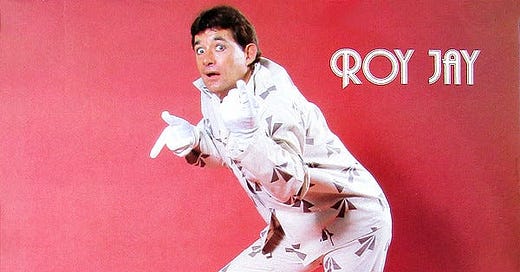


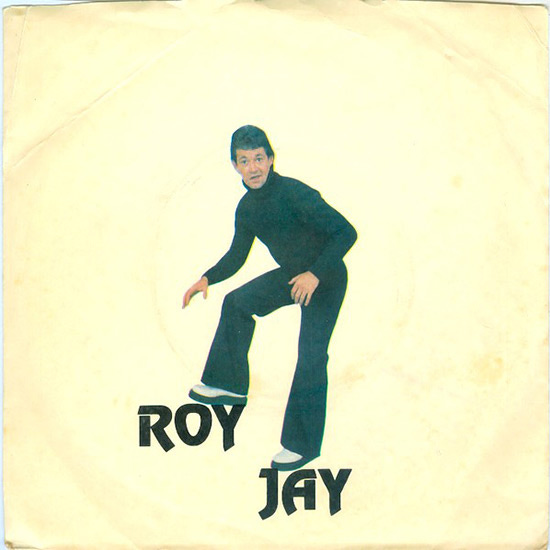
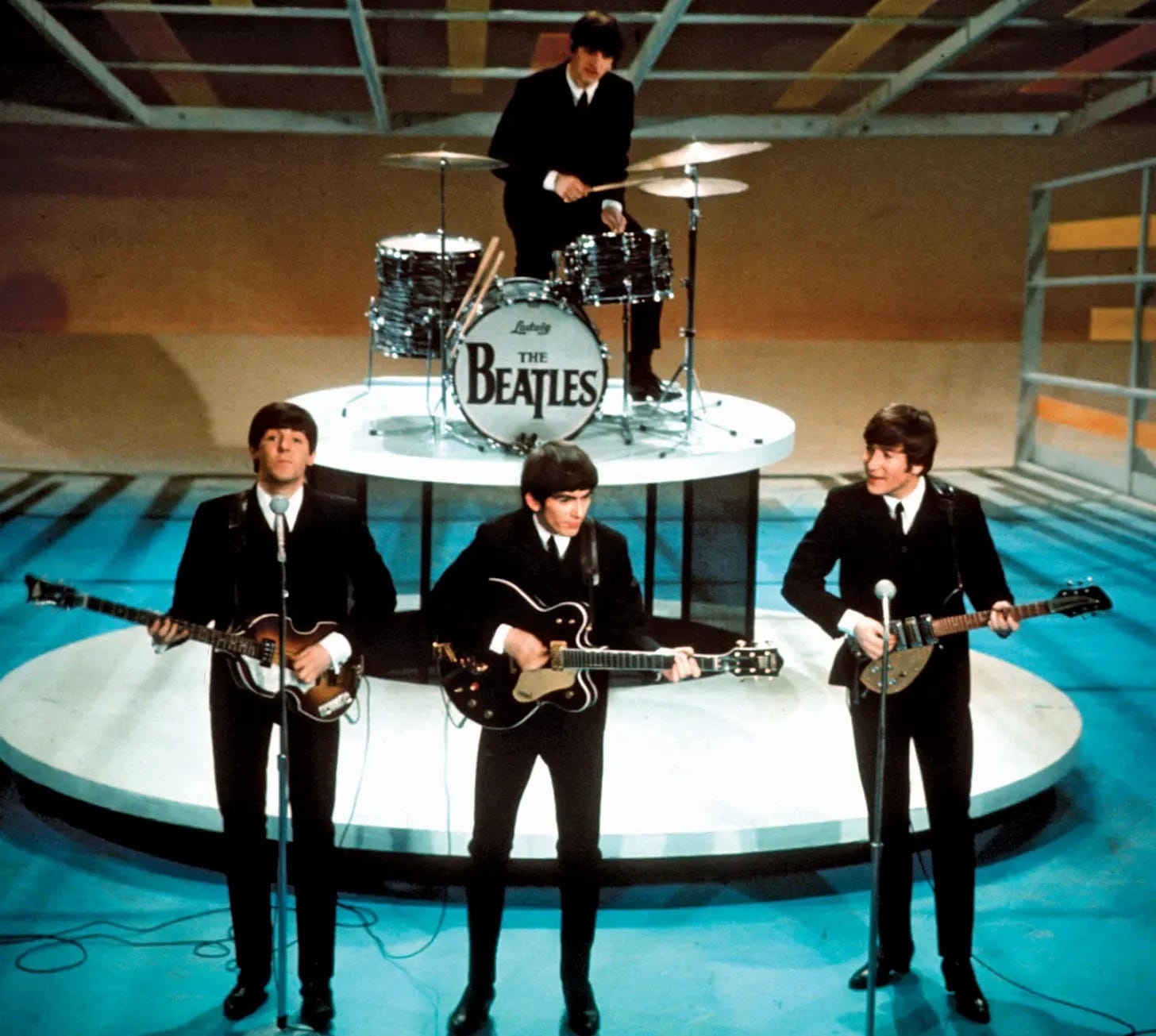



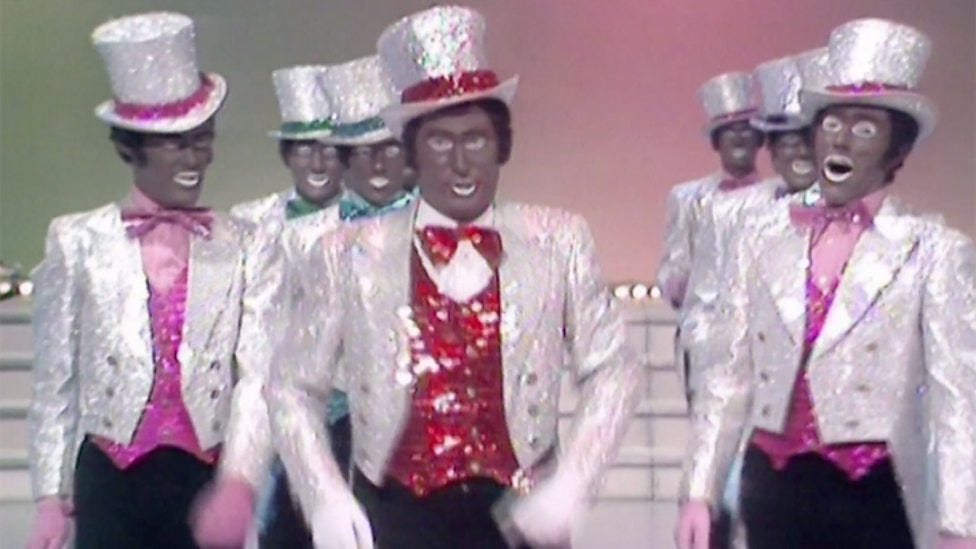

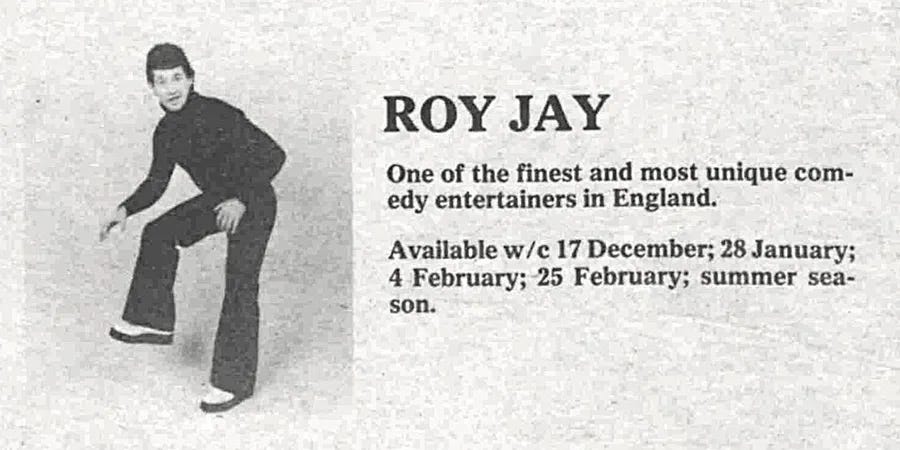


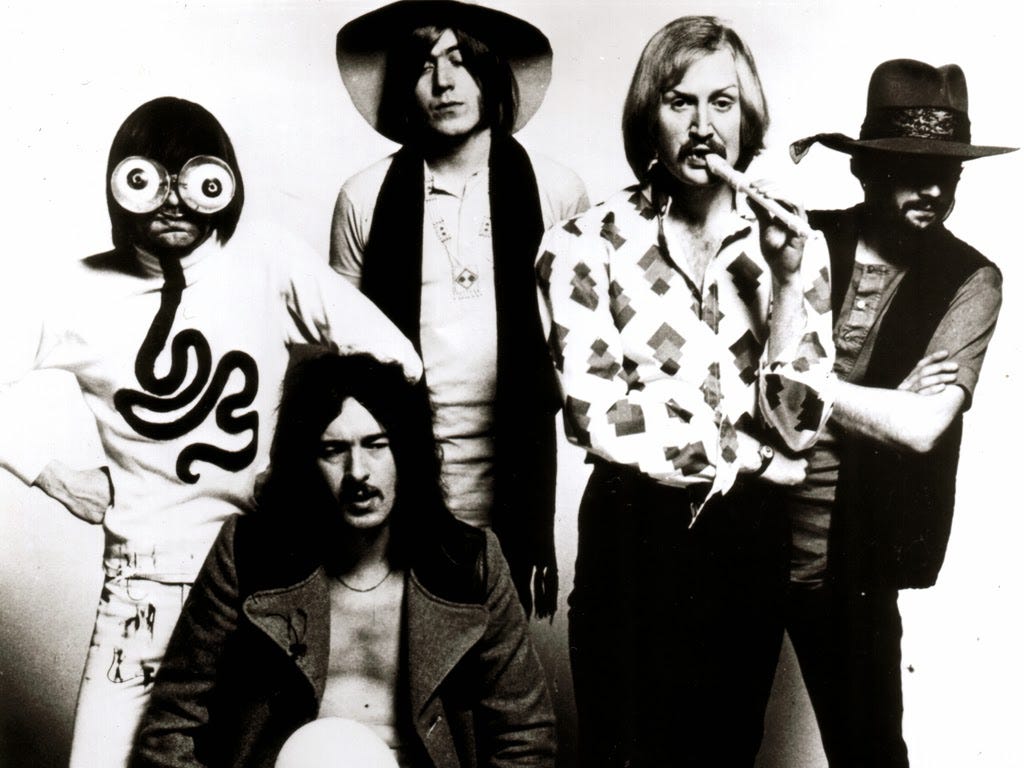


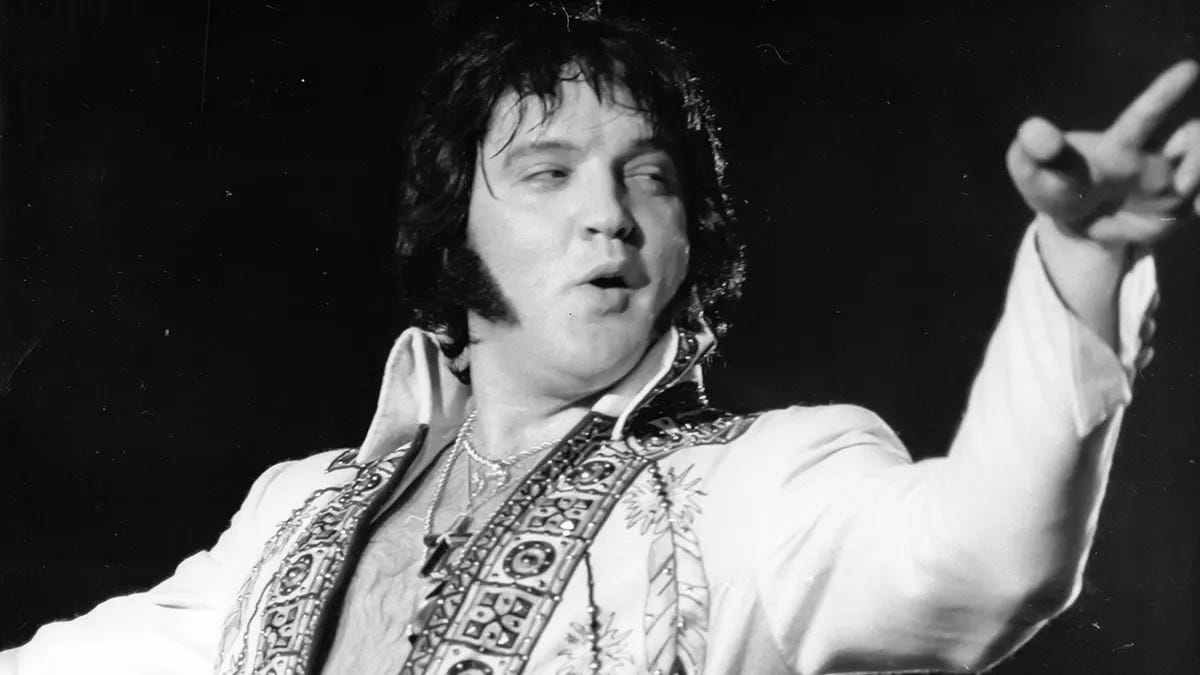






"'Slither hither' was not the solicitation of a young harlot, Watson, ... It was an invocation associated with Roy Jay, a story for which the world is not yet prepared." -Sir Arthur Conan Doyle, "The Adventure of the Sussex Vampire" (1924)
Legacy news media is in a death spiral, wondering how they can get audiences back, or hell just get them to occasionally remember they exist, and the answer is right here. I would watch the hell out of a CNN, PBS, or god help me even MSNBC feature that interviewed people referenced in Roy Jay's bio who are still alive, just to show that cable news can still create the illusion of being more credible than internet crackpots. Actually, I'd have even more respect for them if they said they couldn't verify anything in his bio and we should now be more afraid of this retroactively-inserted demon than we are of Trump, who, as we all know, retroactively inserted himself into the popular culture of the 1980s as a political troll who then morphed into a reality TV president. Lord only knows what RJ will morph into. I picture this demon finally destroying society's last shreds of belief in their Internet privacy by popping up on public websites to show the secretly stored webcam images of random people jacking off to random shit at their computers while blurting, "Weird! You'll all be doing it tomorrow! I'm a spook!" Then we split timelines and some of us descend into murderous mayhem while the rest ascend to a blissful 5D utopia